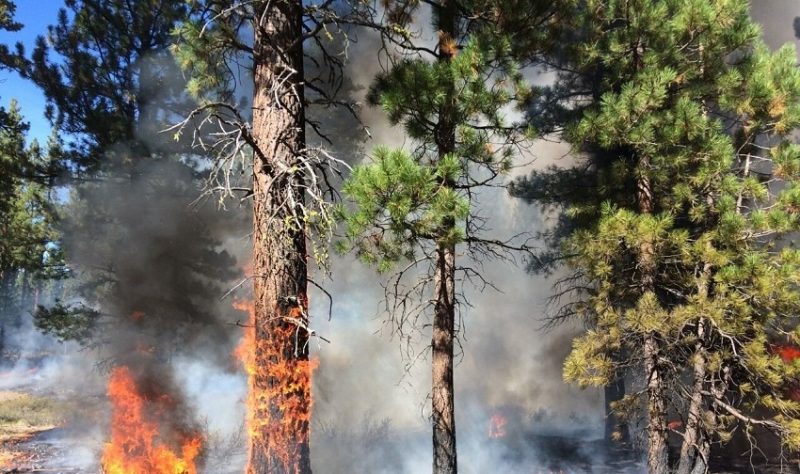Medford, OR – As the fire season in Southern Oregon officially concluded on October 26th, concerns are mounting among lawmakers in Oregon and California about the potential effects of the federal hiring freeze on the upcoming wildfire season. This freeze, which was implemented during the Trump administration, restricts the hiring of seasonal firefighters, leaving local communities worried about their preparedness for the next wave of wildfires.
Senators Ron Wyden and Jeff Merkley of Oregon, alongside other local officials, have publicly voiced strong opposition to the freeze, describing it as “irresponsible and dangerous.” The freeze, while exempting military and public safety positions, does not specifically mention wildland firefighters. However, the executive order allows for exemptions to be granted through the Office of Personnel Management, which has raised questions about whether enough seasonal firefighters will be hired in time for next year’s fire season.
Senator Wyden criticized the freeze, stating, “Trump’s freeze on seasonal firefighter hiring is a big mistake. We need these firefighters year-round, not just for a few weeks in August, and we’re fighting to lift that freeze.”
The concerns are not unfounded. In 2024, wildfires in Jackson and Josephine counties scorched over 5,400 acres, underscoring the ongoing dangers that have plagued the region for years. Nationwide, 2023 witnessed nearly 9 million acres consumed by wildfires. As such, lawmakers like Wyden and Merkley are pushing for more aggressive wildfire prevention measures, including increased funding for prescribed burns and higher pay for firefighters, who have long faced staffing shortages and underfunding.
The Oregon Department of Forestry (ODF) has been assessing the potential impact of the hiring freeze on wildfire prevention efforts. However, the department assured the public that, despite the freeze, firefighting operations and fuels reduction work will continue through the summer. “ODF is analyzing the potential impacts to our fuels reduction work, but it won’t affect firefighters and efforts this summer,” the department said in a statement.
The Bureau of Land Management (BLM) has also stated that critical wildfire prevention activities are ongoing. “Hazardous fuels projects funded by base appropriations are continuing, and fuels reduction work funded by the Bipartisan Infrastructure Law is under review to ensure consistency with the Executive Order,” BLM officials confirmed.
However, non-profit organizations like the Lomakatsi Restoration Project, which has supported fire mitigation and watershed restoration projects across Oregon and California for over 25 years, are already feeling the impacts of federal funding cuts. The organization recently announced the suspension of several projects that were funded by the Biden administration’s infrastructure plan and laid off 15 full-time employees as a result.
As the 2025 wildfire season approaches, the pressure on lawmakers, government agencies, and non-profit organizations to secure adequate funding and staffing remains high. Advocates argue that without sufficient resources, both human and financial, efforts to prevent and manage wildfires will be severely hindered, leaving communities more vulnerable to the devastating effects of future fires.
The coming months will be critical in determining whether these concerns can be addressed in time to protect vulnerable regions from the increasingly frequent and intense wildfire seasons that are becoming a permanent fixture in the Western United States.

